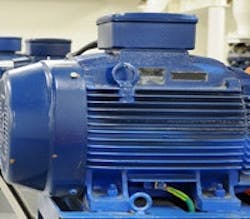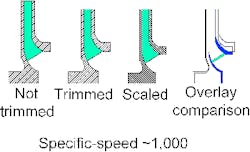Centrifugal Pumps: Avoid Surprises When Cutting Impellers
Affinity laws provide key insights about how centrifugal pumps work. However, as with all shortcuts, you must understand their limitations to prevent unexpected problems. Let's first consider the head affinity law. It states that pump head, h, varies with impeller diameter, d, squared:h1/h2 = d12/d22 (1)This affinity law gives a quick estimate of head change when an impeller gets cut down to a reduced diameter. Experienced engineers know the affinity law is only an approximation. It generally understates the head reduction when using a smaller impeller. You must consult the pump manufacturer to get a more accurate idea of the actual changes resulting from the cut-down impeller.Why does a real pump's performance differ from the affinity law prediction? Many factors go into this but we'll look at only one of them. Pump head depends upon impeller size and shape. Cutting down the impeller changes both. The affinity law takes into account the consequences of a diameter change — but not of a shape change.
CHANGE IN SHAPE
Figure 1. A trimmed impeller and a scaled down one boast different shapes.
IMPELLER SHAPE VERSUS SPECIFIC SPEED
Figure 2. Trimming can alter shape significantly at higher specific speeds.
ANDREW SLOLEY is a Chemical Processing contributing editor. You can e-mail him at [email protected]



